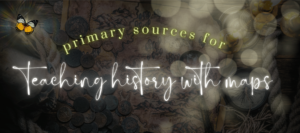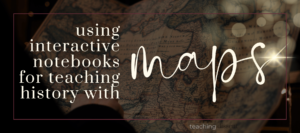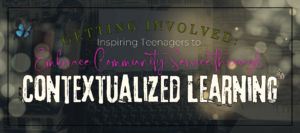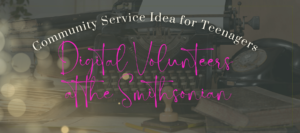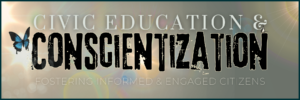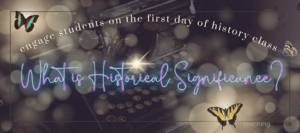Civic education lends itself perfectly to the fusion of theory and practice in the context of informed and engaged citizenship. When approaching the community service requirements for my school, I drew inspiration from Paulo Freire’s concept of ‘conscientization’ to shape the way my students and I approached their civic education.
At the heart of Paulo Freire’s educational philosophy lies the conviction that learning is not a passive endeavor but an ever-evolving process. Praxis, the intertwining of theory and practice, represents the dynamic interplay between theoretical knowledge and practical application, with reflection serving as the crucial bridge uniting these two essential elements.
This approach encourages active engagement with knowledge, enabling individuals to critically dissect their reality, gain profound insights into the world around them, and, most importantly, take action to effect change.
Consequently, learning is not a unidirectional process but rather an ongoing cycle, involving action, reflection, and further action.
Freire's Pedagogy of the Oppressed
Freire introduced the concept of “conscientization” in his seminal work, “Pedagogy of the Oppressed.” In this work, he outlined his pedagogical framework, which is designed to empower individuals to critically examine and challenge oppressive systems and structures.
Conscientization is the idea of individuals discovering their self-worth and recognizing their capacity to enact positive change in society.
As succinctly put by Freire, “praxis = action + reflection.”
Conscientization transcends the acquisition of knowledge or skills; it involves an awakening of consciousness.
It’s the process of realizing one’s agency and potential to bring about meaningful change- in essence, it signifies a journey from passive awareness to active engagement. Freire emphasized that conscientization can never be reduced to just activism, either- which often leads to superficial and short-lived efforts. Likewise, it should not be confined to intellectual reflection alone, devoid of tangible action.
True conscientization emerges when action and reflection are seamlessly intertwined—this is praxis. At the core of praxis is reflection, the process by which individuals contemplate, question, and refine their understanding of the world.
In this context, reflection becomes a potent tool for students to challenge the status quo, discern the root causes of societal issues, and work toward constructive change.

Reflection in Praxis
Reflection, as envisioned by Freire, serves as the lifeblood of praxis. It involves deliberate and thoughtful contemplation of one’s experiences, ideas, and actions. Through reflection, individuals transcend rote memorization and genuinely internalize knowledge. It nurtures a sense of agency and responsibility, empowering learners to actively shape their destinies and the world they inhabit.
To illustrate the power of reflection within praxis, I want to explore a concrete example from my own experience: a year-long project centered on civic responsibility and civic virtue in relation to government’s purpose. Civic education provides an ideal platform for applying Freire’s philosophy, aiming to cultivate informed and engaged citizens who actively participate in their communities and democratic processes.
Civic engagement is the bedrock of a thriving democracy, beginning with empowering individuals to recognize their own self-worth and ability to drive positive change within their communities. In the educational realm, teachers play a pivotal role in nurturing future leaders who are not only well-informed but also actively engaged in civic life.
Let’s delve into how we as teachers can encourage our students to discover their own potential, question their motivations, and find balance between activism and reflection.
Stage 1: Theoretical Understanding
At the outset of their civic education journey, students are introduced to the theoretical foundations of purpose of government and the rights and responsibilities of citizenship. They delve into the principles of democracy, explore governmental functions, and grapple with the philosophical underpinnings of civic duty. For eighth grade, I would use We the People Level Two, for high school, level three.
During this stage, students actively participate in critical discussions, study foundational texts such as the Constitution, and analyze historical events that have shaped the nation. Freire’s pedagogy encourages engagement, allowing students to voice their opinions, ask questions, and challenge preconceived notions. This interactive learning environment not only sets the stage for reflection but also encourages students to ponder the relevance of these concepts to their lives and society at large. Moreover, it fosters an environment where students challenge each other’s ideas, gaining a broader perspective on the subject.
Stage 2: Action
With a solid theoretical foundation in place, students transition to experiential learning. This could be all kinds of things, from simulations to direct engagement with the community and government institutions. For example, students could participate in mock elections, mock trials, and attend city council meetings(or school board meetings- I say those count!). These experiences serve as kind of “fieldwork” for applying the theoretical knowledge they have begun to acquire.
Armed with an understanding of civic responsibility and civic virtue, and bolstered by their experiential learning, students are now prepared to take more concrete actions. They initiate community projects, engage in civil discourse, and begin to actively participate in the democratic process.
Freire’s assertion that conscientization must involve action is a compelling call to action. For students to become active contributors to their communities, they must be encouraged to translate their knowledge and ideals into practice.
In the context of civic engagement, action can manifest in various forms:
Community Service:
Engaging in volunteer work and community service projects enables students to directly address local issues. This hands-on experience helps them connect theory with practice.
Advocacy and Activism:
Encouraging students to advocate for causes they are passionate about—whether environmental conservation, social justice, or educational reform—empowers them to become agents of change.
Participation in Local Government:
Students can attend city council meetings, join youth advisory boards, or participate in mock government programs to grasp the inner workings of local government and gain practical experience in civic processes.
Stage 3: Reflection
Crucially, reflection permeates every stage of this learning journey. Students continually reflect on their experiences and how these relate to civic responsibility and civic virtue. They evaluate the impact of their actions on the community and assess the effectiveness of government policies. After each experiential activity, students are prompted to reflect on their observations, insights, and the real-world application of civic responsibility and civic virtue. They contemplate questions like:
- How did my participation impact the community?
- What challenges did I face, and how can I address them?
These reflective exercises enable students to internalize the lessons learned, transforming abstract concepts into actionable principles.
Continuous reflection distinguishes this stage. Students regularly pause to evaluate the consequences of their actions critically. They assess whether their efforts align with the ideals of civic responsibility and civic virtue. This reflective practice allows them to make informed adjustments, refine their strategies, and remain accountable for their actions in the pursuit of a better society.
While action is indispensable, it cannot be divorced from reflection. A critical examination of one’s motivations, attitudes, and actions (reflection) is essential to ensure that civic engagement remains authentic and effective.
Critical Analysis
Encouraging students to critically analyze their actions. Why are they involved in a particular cause or movement? What are their underlying motivations? Are they genuinely addressing the root causes of an issue, or are they merely addressing its symptoms?
Self-Examination
Freire’s call to “re-examine themselves constantly” reminds us that growth arises from self-reflection. Students should routinely assess their biases, prejudices, and preconceptions that might influence their engagement in civic issues.
The Role of Reflection in Nurturing Informed and Engaged Citizens
It is crucial to emphasize the significance of this process in nurturing informed and engaged citizens. It is not enough to assign a reflection essay, or to simply ask students “to reflect”. Reflection requires time and distance from the event or incident as well as the initial emotions and thoughts. Its an opportunity to synthesize what happened and our reaction to it, to internalize what we have learned and experienced. It takes a little bit more time to explicitly teach the process of reflection, but I sincerely believe it is worth it. Reflection provides students the opportunity to:
Cultivate Critical Thinking
Reflection compels students to think critically about the principles and ideals they encounter, question the status quo, challenge injustice, and seek innovative solutions to societal problems. It equips them with the ability to delve deeper, beyond surface-level information, fostering independent thought.
Foster Empathy and Social Awareness
Reflection leads to awareness. Students learn to recognize the needs and concerns of others in their community and consider their role in the broader context. Civic education, coupled with reflection, encourages students to empathize with diverse perspectives and experiences within their community. This empathy enhances their capacity to engage in civil discourse and bridge divides, vital components of responsible citizenship.
Promote Civic Participation
Reflection serves as the catalyst for action. It propels students from passive observers to active participants in the democratic process. By continually evaluating their role in the community, students become more inclined to vote, engage in public service, and advocate for positive change.
Instill Responsibility
Through reflection, students develop a sense of civic responsibility and civic virtue as more than abstract ideals—they become personal responsibilities. They grasp that active citizenship extends beyond voting; it entails active involvement in the community, taking ownership of their roles as citizens, and advocating for positive change. Importantly, reflection instills a lifelong commitment to learning and civic engagement. It encourages individuals to continually seek knowledge, engage with their evolving communities, and adapt their actions in response to changing circumstances.
The Balance Between Action and Reflection
Striking the right balance between action and reflection is essential for effective praxis. In the realm of education, this equilibrium can be challenging to achieve but is worth pursuing.
Action-Heavy Approach:
Some educators may prioritize action, emphasizing tangible outcomes and immediate results. While this approach can be motivating, it risks overlooking the importance of reflection and critical analysis. It may lead to well-intentioned but superficial engagement.
Reflection-Heavy Approach:
Conversely, an overemphasis on reflection without action may result in students who are well-versed in theory but lack the practical experience needed to effect real change. They may become passive observers rather than active participants.
The key is finding a balance that aligns with the needs and preferences of both the teacher and the students. This balance may evolve over time as the teacher and students gain experience and refine their praxis. The ongoing self-examination that conscientization demands serves as a reminder that our commitment to liberation should never become an assumed possession of wisdom to impose on others. Instead, it should be a journey characterized by growth, humility, and authentic engagement with the causes we hold dear.
Civic Engagement for Teenagers
Teaching civic engagement through conscientization is a transformative endeavor that can empower students to become active and informed citizens who shape the future of their communities and society as a whole. By instilling the values of action and reflection, educators can guide their students on a path of self-discovery and meaningful civic participation. Through this process, students learn to bridge the gap between theory and practice, fostering a deeper understanding of the world around them and their role in shaping it. This approach weaves together theory and practice, knowledge and action, and individual growth and societal transformation.








